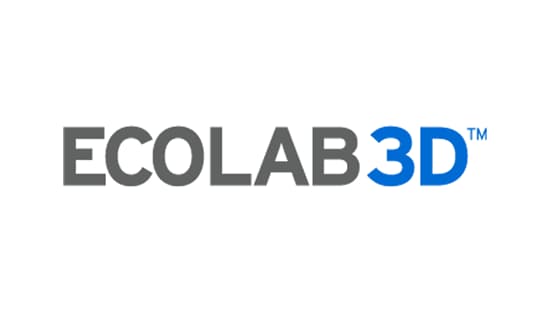De stand van watermilieubeheer markeren in een AI-tijdperk
De wereld wordt steeds meer gevraagd van energie- en watergebruik, voornamelijk als gevolg van transformatieve technologieën zoals AI, maar ook van extreme weersomstandigheden en een evoluerende economie.
- Er wordt geschat dat tegen 2030 de AI-gerelateerde groei een extra hoeveelheid stroom zal vereisen die gelijk is aan de jaarlijkse behoefte van India1 en evenveel water als nodig is om aan de jaarlijkse drinkwaterbehoeften van de Verenigde Staten te voldoen2.
- Datacenters zouden tegen 2027 jaarlijks meer dan 1 biljoen gallon zoet water kunnen gebruiken.3
- Er is naar verwachting een kloof van 56% tussen vraag en aanbod van zoet water tegen 20304 en de vraag naar water zal naar verwachting met 30 % toenemen tegen 2050.5
Als wereldwijde leider op het gebied van duurzaamheid helpt Ecolab deze wateruitdagingen op te lossen. Ons 2025-onderzoek biedt inzicht in de nieuwste waterpercepties en -zorgen en helpt bedrijven, overheden en non-profitorganisaties bij het ontwikkelen van effectieve waterstrategieën. Inzicht in de perceptie van het publiek is essentieel om deze strategieën te helpen onderbouwen en vooruitgang te boeken in de richting van een waterzekere toekomst.
Belangrijkste bevindingen uit het Ecolab Watermark-onderzoek van 2025
Water: de verborgen kosten en kansen van AI
Hoewel veel consumenten het aanzienlijke stroomverbruik van AI erkennen, zijn minder mensen zich bewust van de aanzienlijke waterimpact. Deze bewustzijnskloof is vooral opmerkelijk in Azië-Pacific, IMEA en Latijns-Amerika.
De perceptie van consumenten van de mate waarin elk natuurlijke hulpbron momenteel wordt gebruikt om AI-activiteiten te ondersteunen :

China
81% Energie
77% Water

IMEA
78% Energie
61% Water

Latijns-Amerika
68% Energie
51% Water

Azië-Pacific
60% Energie
43% Water

Europa
59% Energie
46% Water

Verenigde Staten
55% Energie
46% Water
Gegevens illustreren instemmingspercentages:
Bedrijven moeten gebruikmaken van AI
voor een verantwoord gebruik van natuurlijke hulpbronnen
Vertrouw op bedrijven om de energiebehoefte van AI-activiteiten op verantwoorde wijze te beheren

IMEA
2026
76%
63%

China
2026
72%
77%

Latijns-Amerika
70%
49%

Europa
2026
54%
37%

Azië-Pacific
51%
37%

Verenigde Staten
49%
39%

Slim waterbeheer: consumenten willen dat bedrijven water slim hergebruiken
Ondanks de wijdverbreide overtuiging van consumenten dat bedrijven prioriteit moeten geven aan slim waterbeheer om waterschaarste aan te pakken, vinden minder mensen dat deze bedrijven erin slagen oplossingen voor waterhergebruik in praktijk te brengen.
Percentage consumenten dat van mening is dat bedrijven tijdens hun dagelijkse activiteiten water verminderen, hergebruiken, recyclen, herstellen en terugwinnen .

Verenigde Staten
43%

Europa
44%

Latijns-Amerika
48%

Azië-Pacific
48%

IMEA
67%

China
74%
Er bestaat een brede consensus onder consumenten wereldwijd:
bedrijven moeten prioriteit geven aan investeringen in technologieën en infrastructuur ter versterking van de veerkracht van watervoorraden.
om de watervoorraden te beschermen tegen klimaatverandering:

Latijns-Amerika
84%
85%

IMEA
2026
82%
82%

China
2026
77%
76%

Europa
2026
72%
71%

Azië-Pacific
71%
70%

Verenigde Staten
68%
67%
Bedrijven die verantwoorde waterpraktijken toepassen, kunnen rekenen op grote belangstelling van de consument.
Percentage consumenten dat bereid is
actief op zoek te gaan naar meer informatie
van deze bedrijven:

Latijns-Amerika
82%

IMEA
2026
78%

China
2026
68%

Azië-Pacific
61%

Europa
2026
61%

Verenigde Staten
61%
Watersamenwerkingen
Geen enkele entiteit kan wateruitdagingen alleen aanpakken. Door krachtige partnerschappen te smeden, kunnen bedrijven, overheden en gemeenschappen sneller gecoördineerde actie ondernemen om oplossingen te vinden en een waterbestendige toekomst voor iedereen op te bouwen.
In de meeste regio's houden consumenten bedrijven (waaronder fabrikanten)) en overheden in gelijke mate verantwoordelijk voor waterbesparing. Beiden worden echter nog steeds bekritiseerd omdat ze niet genoeg bijdragen in vergelijking met individuen, non-profitorganisaties en natuurbeschermingsorganisaties.
De onderstaande gegevens tonen hoe consumenten denken over hoeveel elke entiteit tot nu toe heeft gedaan om water te besparen in hun land:

Latijns-Amerika
42% bedrijven
55% individuen
48% Overheid
60% non-profitorganisaties

Europa
2026
45% bedrijven
56% individuen
45% Overheid
54% non-profitorganisaties

Verenigde Staten
47% bedrijven
58% individuen
48% Overheid
56% non-profitorganisaties

Azië-Pacific
2026
48% bedrijven
49% individuen
46% Overheid
50% non-profitorganisaties

IMEA
2026
63% bedrijven
69% individuen
79% Overheid
67% non-profitorganisaties

China
2026
80% bedrijven
79% individuen
84% Overheid
79% non-profitorganisaties
Ondanks de wereldwijde wateruitdagingen zijn consumenten zeer optimistisch over ons vermogen om deze aan te pakken.
Een overweldigende meerderheid (meer dan 60% van de consumenten in elke regio) is van mening dat waterschaarste
doeltreffend kan worden aangepakt.
De mate waarin consumenten
het ermee eens zijn dat waterschaarste
doeltreffend kan worden aangepakt:

Latijns-Amerika
84%

IMEA
2026
83%

China
2026
73%

Verenigde Staten
67%

Europa
2026
66%

Azië-Pacific
61%
Extreme weersomstandigheden
Consumenten zijn van mening dat veranderingen in het weer en de toename van natuurrampen de waterschaarste verergeren,
wat leidt tot uitdagingen op het gebied van zowel de beschikbaarheid als de kwaliteit van water.
Percentage consumenten dat klimaatverandering in verband brengt met verergering van waterstress:

IMEA
2026
81%

China
2026
80%

Latijns-Amerika
79%

Azië-Pacific
2026
69%

Europa
2026
69%

Verenigde Staten
65%
Consumenten eisen duidelijk actie tegen klimaatverandering en hebben een sterke verwachting
van het leiderschap van zowel bedrijven als overheden.
Percentage consumenten dat van mening is dat
het is van groot belang dat regeringen en bedrijven inspanningen prioriteren ter vermindering van
de impact van klimaatverandering:

Latijns-Amerika
87%
88%

IMEA
2026
81%
81%

China
2026
76%
77%

Europa
2026
71%
71%

Azië-Pacific
70%
69%

Verenigde Staten
67%
67%
Opmerkelijke jaarlijkse trends
Aangezien de toegang tot schoon en veilig water wereldwijd een kritiek probleem blijft, is de bezorgdheid van de consument iets om op te letten.
Hoe bezorgd consumenten zijn over schoon en veilig water, uitgesplitst naar regio:

China
2026
96%

Latijns-Amerika
92%

Verenigde Staten

Europa
2026
69%

IMEA
2026
67%

Azië-Pacific
2026
63%
Consumenten in de meeste regio's melden consequent landbouw en
voedsel- en drankproductie als de sectoren die het meest verantwoordelijk zijn voor het waterverbruik.
Agrarisch
Voedsel en drank

IMEA
2026
52%
37%

Latijns-Amerika
48%
44%

Azië-Pacific
47%
36%

Europa
2026
47%
33%

Verenigde Staten
43%
31%

China
2026
29%
28%
Watermilieubeheer verbeteren
Al meer dan 100 jaar werkt Ecolab aan het beschermen van levensnoodzakelijke hulpbronnen door watermilieubeheer te prioriteren in de eigen activiteiten en die van klanten. In meer dan 40 sectoren wereldwijd helpt Ecolab bedrijven een oplossing te vinden voor klimaat- en wateruitdagingen door hun watergebruik in cruciale processen te minimaliseren. We helpen onze klanten blijvende resultaten te boeken en een exponentieel rendement op investering (eROI) te behalen door klimaat-, water- en bedrijfsgroeidoelstellingen op elkaar af te stemmen.
Onze oplossingen
Met het beheer van meer dan een triljoen liter water per jaar combineert Ecolab Connected Chemistry™
met digitale inzichten en sector-expertise om duurzaamheid en groei gezamenlijk te stimuleren.
Lees meer over hoe Ecolab u kan helpen om waterbeheer slim aan te pakken binnen uw bedrijf.

Stel kansen vast met de Smart Water Navigator

Kies voor een zakelijke benadering met Ecolab Water for Climate™

Beheer waterprestaties met 3D TRASAR™-technologie

Visualiseer inzichten met ECOLAB3D™ digitale services
Onze projecten
Wanneer het herstellingsvermogen van water wordt aangepakt, kunnen bedrijven floreren. De volgende casestudy's laten zien hoe Ecolab bijdraagt aan een positieve impact op de bedrijfs-, water- en klimaatdoelstellingen van onze klanten:
Onze partnerschappen
Onze partnerschappen met toonaangevende niet-gouvernementele organisaties (NGO's) versterken onze inzichten in en ons vermogen om invloed uit te oefenen op wereldwijde uitdagingen waar ons bedrijf, onze klanten en onze gemeenschappen mee te maken hebben. Hieronder volgt een overzicht:
- Bloomberg Law, "AI-computing op tempo om meer energie te verbruiken dan India, zegt Arm", 2024 april: news.bloomberglaw.com/artificial-intelligence/ai-computing-on-pace-to-consume-more-energy-than-india-arm-says↵
- Analyse door Ecolab van gegevens van Lei, N., & Masanet, E. (2022) en Goldman Sachs (2024)↵
- AI minder "dorstig" maken: de geheime watervoetafdruk van AI-modellen blootleggen en aanpakken: www.goldmansachs.com/insights/articles/AI-poised-to-drive-160-increase-in-power-demand en TIME, "Hoe AI een hausse in datacenters en energievraag aanwakkert": time.com/6987773/ai-data-centers-energy-usage-climate-change/↵
- World Resource Institute: "Setting Enterprise Targets: Modeling Downstream Water Use and Consumption": Setting Enterprise Targets: Modellering van stroomafwaarts watergebruik en -verbruik | Het World Resource Institute↵
- World Resource Institute, "Zoet water veiligstellen voor iedereen": www.wri.org/freshwater↵


